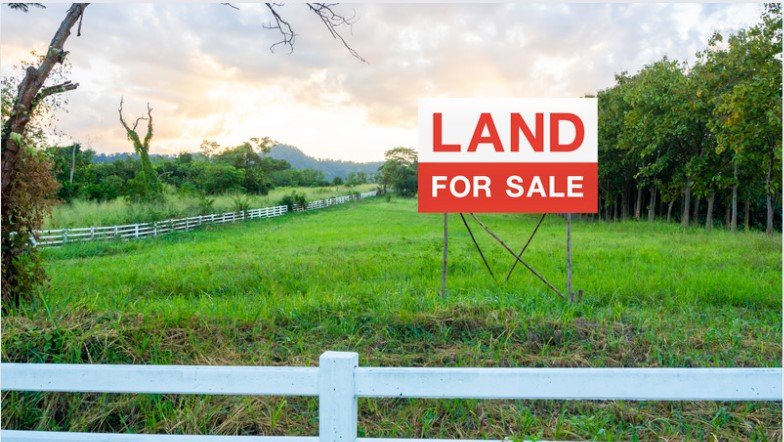Owning a slice of land can be a dream come true, offering a sanctuary away from the hustle and bustle of urban life. Whether you envision building a cozy cabin retreat or constructing your dream home, the process of acquiring land demands thoughtful consideration. As someone who embarked on this journey myself, I understand the excitement and challenges that come with turning a patch of earth into a personal haven.
Reflecting on my own experiences, I’ve come to realize the paramount importance of scrutinizing the land itself before making a purchase. From the lay of the land to essential features like soil quality, drainage, and potential natural hazards, every aspect plays a crucial role in shaping your future abode. Additionally, consider the accessibility of utilities such as water, electricity, and internet connectivity, as these can significantly impact your quality of life on the property. Before you take the leap into land ownership, let’s delve into the key factors to ponder, ensuring that your investment lays the foundation for your dreams to flourish.
What to Look for When Buying Land
1. Lot Size
When considering properties, the first question to address is the lot size. Determining how much land you need is primarily a matter of personal preference.
Are you seeking vast expanses for tranquil walks with your furry companion, free from the disruptions of neighbors? Larger plots offer myriad opportunities, including space for auxiliary buildings like greenhouses or barns, indulging in hobbies like farming, or enjoying recreational activities such as off-roading with ATVs or snowmobiles. However, it’s essential to weigh these advantages against potential downsides, such as increased initial expenses and higher property tax burdens.
2. Closeness to Nearby Residents
Consider the proximity to neighbors when searching for land for your future home or cabin. Assess your tolerance for potential disturbances from nearby residents. While it may seem pessimistic, it’s essential to acknowledge that even if your current neighbors are agreeable, future property owners could introduce unforeseen challenges.
From my own experiences, I’ve observed that rural cottage and cabin areas often attract diverse characters compared to suburban neighborhoods. Prepare yourself for potential nuisances like noisy pets, wandering livestock disrupting property boundaries and gardens, or even unsafe firearm practices nearby.
While you may not encounter these issues, you might value the social aspect of having nearby neighbors. However, it’s crucial not to assume that their behavior will always remain favorable.
3. Close Distance to Water
Consider the proximity to water as another crucial factor to decide on early in your land search. Contemplate whether you desire access to a lake or river. Properties with water frontage typically command higher prices, yet the recreational opportunities such as swimming, fishing, and boating often justify the investment for cabin owners.
If you opt for a waterfront location, carefully consider the type of water body you prefer. Deep lakes offer a wide range of recreational possibilities. While rivers also offer appeal, smaller or turbulent ones may not provide as much enjoyment compared to the serene expanses of a lake.
4. Shoreline Characteristics
Consider the shoreline characteristics as another crucial aspect to ponder early in your search for land. Reflect on whether you desire access to a lake or river. Properties with waterfront views typically command higher prices, yet the recreational opportunities such as swimming, fishing, and boating often justify the investment for cabin owners.
If you opt for a waterfront location, carefully assess the specific features of the shoreline. Deep lakes offer a wide range of recreational possibilities. While rivers also offer appeal, smaller or turbulent ones may not provide as much enjoyment compared to the serene expanses of a lake.
5. Nearness to Urban Areas
Factor in the proximity to town as a pivotal consideration unless you’re committed to a completely self-sufficient lifestyle. Reflect on the distance to the nearest town and assess its ability to cater to your everyday needs. Consider your comfort level regarding the distance you’ll need to travel for groceries, hardware essentials, and medical services. Does the nearby town boast sufficient healthcare facilities, including a hospital and ambulance service?

These aspects hold significant importance, especially if you prioritize access to healthcare and swift assistance during emergencies. It’s crucial to address these concerns before finalizing a land purchase and constructing a cabin to avoid discovering later that urgent medical situations may require airlifting to the nearest major city.
6. Access to Electrical Grid
Once you’ve finalized the size and features of your prospective home or cabin site, it’s crucial to assess the availability of electricity. Are grid-powered electrical lines conveniently nearby? If not, you’ll have to decide between setting up an off-grid system powered by solar or wind energy, or investing in extending the grid by having the power company install new poles from the closest access point.
Avoid the oversight of selecting land solely based on aesthetics. Securing electricity can pose significant challenges and expenses for a cabin situated in an inconvenient location.
7. Sewage and Drinking Water
Take into account your arrangements for drinking water and sewage disposal. If you’re considering installing a septic system for your future home or cabin, it’s crucial to plan ahead. Alternatively, you might opt for a composting toilet and gray water pit, or connect to the local sewage system if available. Keep in mind that remote properties often lack municipal sewage systems, limiting your options to properties closer to town.
Likewise, access to a municipal water supply is typically only feasible in proximity to urban areas. If you prefer a more secluded setting with an independent water system, you’ll need to drill a well and install a submersible pump or explore the possibility of drawing water from a nearby lake or river. Additionally, consider whether installing an irrigation system is necessary, particularly if you intend to cultivate crops or maintain an extensive garden.
8. Internet and Cellular Coverage
Assessing internet and cell service availability is crucial unless you intentionally seek complete disconnection. Living without internet access can be challenging, so it’s essential to consider the internet providers and cell signal strength at prospective properties. Remember, your cell phone might be a lifeline in emergencies, emphasizing the importance of ensuring reliable service before choosing land.
9. Accessibility via Roads
Consider the accessibility of roads when assessing potential land options. While the natural beauty of the land may be appealing, its enjoyment could be limited if reaching it requires traversing rough terrain or dense vegetation. Evaluate the condition of roads leading to the properties under consideration.
Are there established year-round, municipally maintained roads providing direct access to the land? Alternatively, are there existing trails that could be utilized as access roads, and are you willing to maintain them yourself? If not, it’s essential to decide whether investing in road construction is a viable option. Additionally, if you plan to use the cabin during winter months, consider acquiring snow removal equipment to ensure continued access.
10. Depth and Composition of Soil
Soil depth and composition may not initially top your list of priorities when searching for land, but they are undoubtedly crucial considerations. Are you intending to cultivate a garden? Optimal growth requires nutrient-rich soil with ample carbon content.
Additionally, soil depth plays a significant role. Shallow soil tends to drain rapidly during heavy rainfall. However, if there’s only a thin layer of soil above bedrock, it may limit options such as constructing a basement for your home or cabin, unless you’re prepared to transport numerous loads of fill to raise the ground level around your structure. Furthermore, soil composition is essential for establishing lawns and planting trees effectively.
11. Existence and Variety of Forests
Presence and type of forest cover are significant factors to consider when purchasing land, especially for those, like myself, who envision a harmonious relationship with the land, including utilizing on-site wood for heating. If your plan involves heating with wood, hardwood species such as maple, oak, ash, and birch are preferable for their superior quality as firewood. Consequently, forests predominantly consisting of softwood species like spruce and balsam may not be ideal for cabin owners seeking to sustainably harvest their heating fuel.

A hardwood forest spanning four or five acres can provide ample firewood to sustainably heat a medium-sized building for many years, given proper management. Furthermore, forest composition plays a vital role if you intend to engage in activities such as hunting, tapping trees for syrup production, or creating walking trails.
12. Opportunities for Hunting
For those interested in hunting, it’s likely that your new home or cabin will serve as a prime location for securing meat through traditional means. To accommodate this, opting for a spacious lot with at least a couple of sides devoid of nearby neighbors is advisable, especially if deer hunting is on the agenda.
Given that deer rifles can project bullets for considerable distances, prioritizing safety is paramount when surveying potential cabin properties designated for hunting. Additionally, ensuring that hunting is permitted in your area and familiarizing yourself with the hunting seasons is crucial. These seasonal dates may vary depending on the location.
13. Property Taxes
Property taxes may not be the most enjoyable or exciting aspect to consider when evaluating land, but they are undeniably significant. If you’re working with a real estate agent, inquire about the property tax rates in the area. Alternatively, seek insights from local residents who own similar properties to the one you’re interested in.
It’s important to note that once you build on the land, your tax rates will likely increase. If the property already has existing structures, expect the tax rates to be higher compared to vacant lots. Ultimately, it’s essential to prevent property taxes from becoming an unexpected burden during your cabin or home building journey.
14. Local Bylaws
Understanding local bylaws is essential as building codes and regulations differ significantly across regions. It’s crucial to familiarize yourself with the fundamental rules of an area before purchasing land and commencing construction.
Local bylaws typically outline specific requirements such as mandatory year-round insulation for roofs and walls, minimum distances between buildings and bodies of water, specifications for water systems, regulations regarding livestock, waste management guidelines, and other relevant factors. Your responsibility lies in comprehensively learning these requirements to avoid unpleasant surprises such as unexpected visits or calls from enforcement officers or building inspectors.
15. Insects and Other Pests
Consider the presence of insects and other pests as you plan your building location. Your tolerance for mosquitoes, black flies, raccoons, skunks, and similar creatures may significantly influence your decision, especially if you’re building far from urban areas. While there are methods to manage these nuisances, you must determine your stance on potential solutions such as using an electric bug zapper, employing live traps for raccoons and skunks, or even considering firearm use.
16. Future Development Plans
When evaluating land for purchase, it’s essential to consider potential future development plans in the surrounding area. Research any proposed infrastructure projects, zoning changes, or urban expansion initiatives that may impact the property. Understanding these plans can provide insight into how the area may evolve over time and the potential impact on property values, traffic patterns, and overall neighborhood character. Additionally, consider how future development may affect your quality of life and the desirability of the location for both current and future residents. By staying informed about future development plans, you can make informed decisions about the long-term suitability and investment potential of the land.
17. Natural Disasters
Factor in the likelihood of natural disasters when assessing the land. Investigate the region’s history with events like floods, wildfires, earthquakes, hurricanes, or other pertinent disasters, and weigh the potential consequences for the property. This understanding enables you to make prudent choices regarding land acquisition and development, potentially incorporating strategies to mitigate the risks associated with natural hazards.
18. Resale Value
Consider the potential resale value of the land as you make your decision. Evaluate market trends, property appreciation rates, and factors that may influence demand in the future. Understanding these dynamics can help you make a sound investment and ensure that your property retains or increases its value over time. Additionally, think about any unique features or amenities that may appeal to future buyers, as these could enhance the property’s attractiveness in the resale market.
19. Zoning Restrictions
Take into account the zoning restrictions governing the land as you proceed with your purchase. Familiarize yourself with regulations regarding land use, building height limitations, setback requirements, and any other relevant restrictions imposed by local authorities. Understanding these zoning regulations is essential for ensuring compliance with legal requirements and avoiding potential conflicts or limitations on your intended use of the property. Additionally, consider the implications of zoning restrictions on future development plans and the overall suitability of the land for your intended purposes.
20. Winter Conditions
Assessing winter conditions is crucial when considering land suitability. Explore factors like average snowfall, duration of snow cover, and frequency of extreme cold spells. This knowledge enables you to plan effectively for seasonal challenges such as snow removal, accessibility during winter months, and potential impacts on outdoor activities. Understanding winter conditions ensures you can make informed decisions about the land’s usability and overall suitability for your needs.
If you need any help in buying land in Northern Wisconsin, and surrounding areas contact Visions First Realty, LLC. Visions First Realty, LLC is a small business real estate agency providing professional real estate services with integrity and trust throughout Northern Wisconsin, and surrounding areas.


